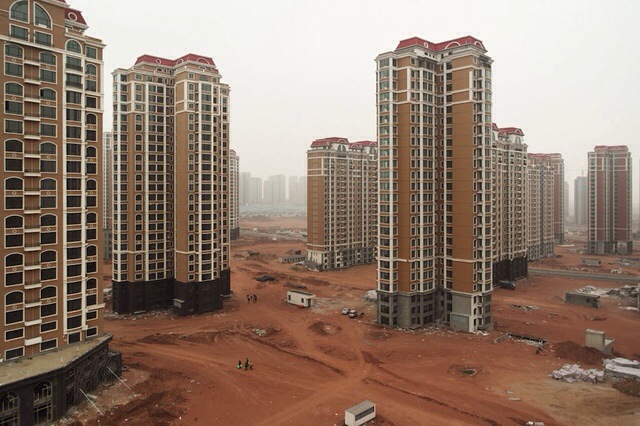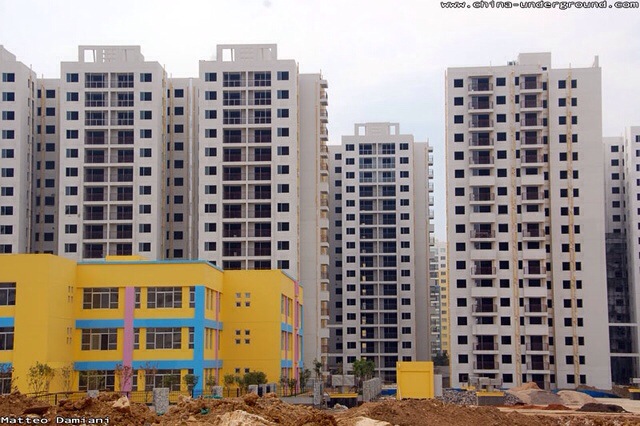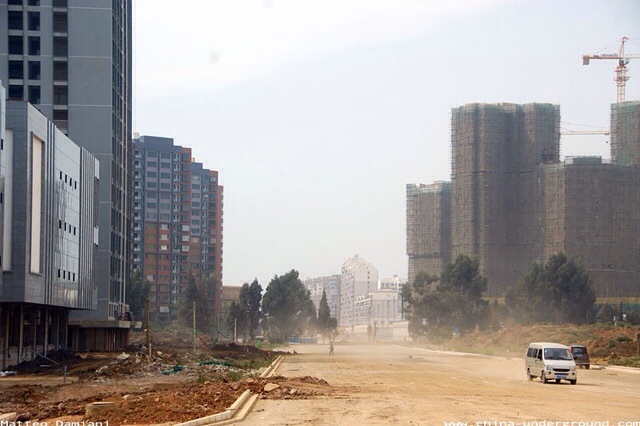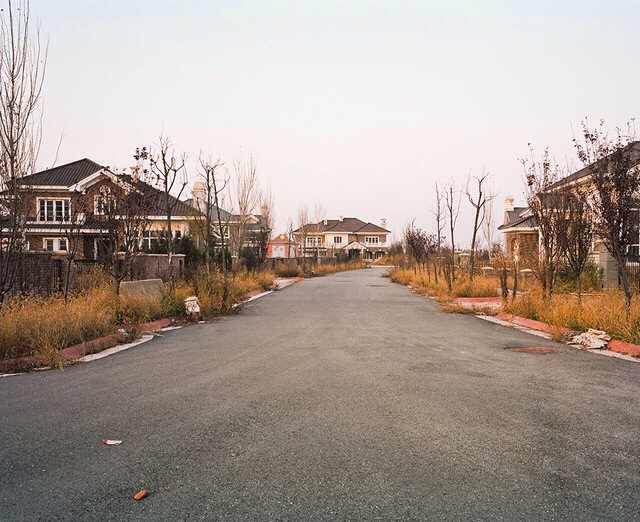China’s building boom has created a ton of abandoned cities and massive ruins — most of which are brand new, and have never had people living in them. Here are the deserted Chinese cities, mostly built in the last 10 years, which could be sets for your next dystopian movie.
Kangbashi New Area, a district of Ordos, Inner Mongolia, Northern China
In 2003, Ordos officials started the planning a new 1 million person city district. Thanks to a $161 billion investment in 2010, the “Dubai of Northern China” has the capacity for 300,000 people — but only 20,000-30,000 residents. It isn’t a ghost town due to economic issues — the government simply can’t convince people to move there.

Little did we know that most of that iron ore being shipped to Guangzhou from Rio de Janeiro and Port Hedland, Australia was going to build Chinese cities; cities that would remain vacant for years. China single-handedly topped the phrase “bridge to nowhere” and made ghost cities a euphemism for lousy development planning in the world’s No. 2 economy. Anyone can build a useless overpass, but it takes China to build a city for a million people with no buyers in sight.
The naysayers loved the Western media’s discovery of China’s ghost cities. It was evidence that China’s growth of the last 20 years was based on building things nobody needed or wanted. This was planned obsolescence on a grand scale. And now that the economy is slowing, what will become of those cities? Many of them are debt burdens carried by the developers who haven’t sold a single unit.

From shopping malls to soccer stadiums, hundreds of new cities in China are largely empty. And yet more cities are still being built deep in the heart of the country. All in hopes that its rural population will one day move to a flat in a city without a mayor. It’s plausible, of course. That’s because over the next 15 years, the country’s urban population will be 1 billion; three times that of the United States.

What will become of these cities going forward? Here’s a quick answer: a handful might be shuttered. Most will be filled. New ones will undoubtedly be built.
China’s developing its urban architecture three ways: new cities (xinshi), new districts (xinqu) and the so-called townification (chengzhenhua). Townification is quite a departure from the way Chinese cities have developed to date. This is the transformation of small rural centers and even tribal villages and building a small urban center around them. The Communist Party planners in Beijing want to urbanize over 100 million rural Chinese over the next five years alone. That would require the construction of 50 Bostons, or six Shanghais, by 2020. Townification is lower intensity than that. These are small cities rather than sky scraper zones designed to house suits and high heels. It’s more widespread than traditional urbanization, and will define the way China develops socio-economically over the coming years.
Roughly 40% of the 300 million Chinese expected to move into a city by 2030 will mostly be moving to smaller cities in the “chengzhenhua” system. Rather than migrating to cities, the cities will be built around them instead.

Originally posted 2013-09-28 01:03:22. Republished by Blog Post Promoter

![20130928-030110[1]](https://coolinterestingnews.com/wp-content/uploads/2013/09/20130928-0301101.jpg)











